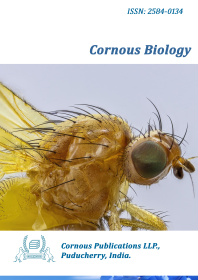

Background: Chitosan, a commonly used biopolymer, has attracted a lot of attention because of its potential in various chemotherapeutic applications. Even though its biomedical properties have been thoroughly studied, systematic studies assessing how molecular weight affects its cytotoxic effects across various cell lines while holding other crucial parameters like pH and degree of deacetylation constant are still lacking. Information regarding the cytotoxic profiling of different molecular weight chitosan is necessary to optimize the therapeutic efficacy.
Methods: The current study aimed to evaluate the cytotoxic effects of high, medium, and low molecular weight chitosan on L929 fibroblast and MCF-7 breast cancer cell lines using the MTT assay. Different concentrations of low, medium, and high molecular weight chitosan were treated on both cell lines for 24 hours, followed by addition of MTT reagent. After 2 hrs incubation, the formazan crystals were dissolved in DMSO, and the optical density was measured to calculate cell viability.
Results: High molecular weight chitosan had the lowest cytotoxicity in L929 cells with an IC50 of 496 ± 37.46a µg/mL, while low molecular weight chitosan exhibited the highest cytotoxicity with an IC50 of 345±9.03c µg/mL. Interestingly, in the case of the MCF-7 cell line, the high molecular weight chitosan exerted a higher cytotoxic effect with an IC50 value of 217 ± 5.72d µg/mL, followed by 331 ± 13.55c µg/mL of medium and 479 ± 14.75a µg/mL of low molecular weight chitosan.
Conclusion: The current findings indicate that high molecular weight chitosan demonstrates greater compatibility compared to low and medium molecular weight chitosan in the L929 cell line. However, it also shows potential cytotoxic effects in the MCF-7 breast cancer cell line, suggesting its possible therapeutic application in drug delivery and cancer treatment.
chitosan, L929 & MCF-7 cell lines, biocompatibility, cytotoxicity
Adhikari, H. S., & Yadav, P. N. (2018). Anticancer activity of chitosan, chitosan derivatives, and their mechanism of action. International Journal of Biomaterials, 2018, 2952085. https://doi.org/10.1155/2018/2952085
Chae, S. Y., Jang, M. K., & Nah, J. W. (2005). Influence of molecular weight on oral absorption of water soluble chitosans. Journal of Controlled Release, 102(2), 383–394. https://doi.org/10.1016/j.jconrel.2004.10.012
de Sousa, V. R., Marcelo da Cunha Santos, A., Viana de Sousa, B., de Araújo Neves, G., Navarro de Lima Santana, L., & Rodrigues Menezes, R. (2020). A review on chitosan's uses as biomaterial: Tissue engineering, drug delivery systems and cancer treatment. Materials, 13(21), 4995. https://doi.org/10.3390/ma13214995
Ding, J., & Guo, Y. (2022). Recent advances in chitosan and its derivatives in cancer treatment. Frontiers in Pharmacology, 13, 888740. https://doi.org/10.3389/fphar.2022.888740
Kean, T., & Thanou, M. (2010). Biodegradation, biodistribution and toxicity of chitosan. Advanced Drug Delivery Reviews, 62(1), 3–11. https://doi.org/10.1016/j.addr.2009.09.004
Khorsandi, L., Orazizadeh, M., Niazvand, F., Abbaspour, M. R., Mansouri, E., & Khodadadi, A. (2017). Quercetin induces apoptosis and necroptosis in MCF-7 breast cancer cells. Bratislavské Lekárske Listy, 118(2), 123–128. https://doi.org/10.4149/BLL_2017_025
Mikušová, V., & Mikuš, P. (2021). Advances in chitosan-based nanoparticles for drug delivery. International Journal of Molecular Sciences, 22(17), 9652. https://doi.org/10.3390/ijms22179652
Park, J. K., Chung, M. J., Choi, H. N., & Park, Y. I. (2011). Effects of the molecular weight and the degree of deacetylation of chitosan oligosaccharides on antitumor activity. International journal of molecular sciences, 12(1), 266–277. https://doi.org/10.3390/ijms12010266
Rafiq, M., Ahmed, J., Alturaifi, H. A., Awwad, N. S., Ibrahium, H. A., Mir, S., Maalik, A., Sabahat, S., Hassan, S., & Khan, Z. U. H. (2024). Recent developments in the biomedical and anticancer applications of chitosan derivatives. International Journal of Biological Macromolecules, 283, 137601. https://doi.org/10.1016/j.ijbiomac.2024.137601
Shakil, M. S., Mahmud, K. M., Sayem, M., Niloy, M. S., Halder, S. K., Hossen, M. S., Uddin, M. F., & Hasan, M. A. (2021). Using chitosan or chitosan derivatives in cancer therapy. Polysaccharides, 2(4), 795-816. https://doi.org/10.3390/polysaccharides2040048